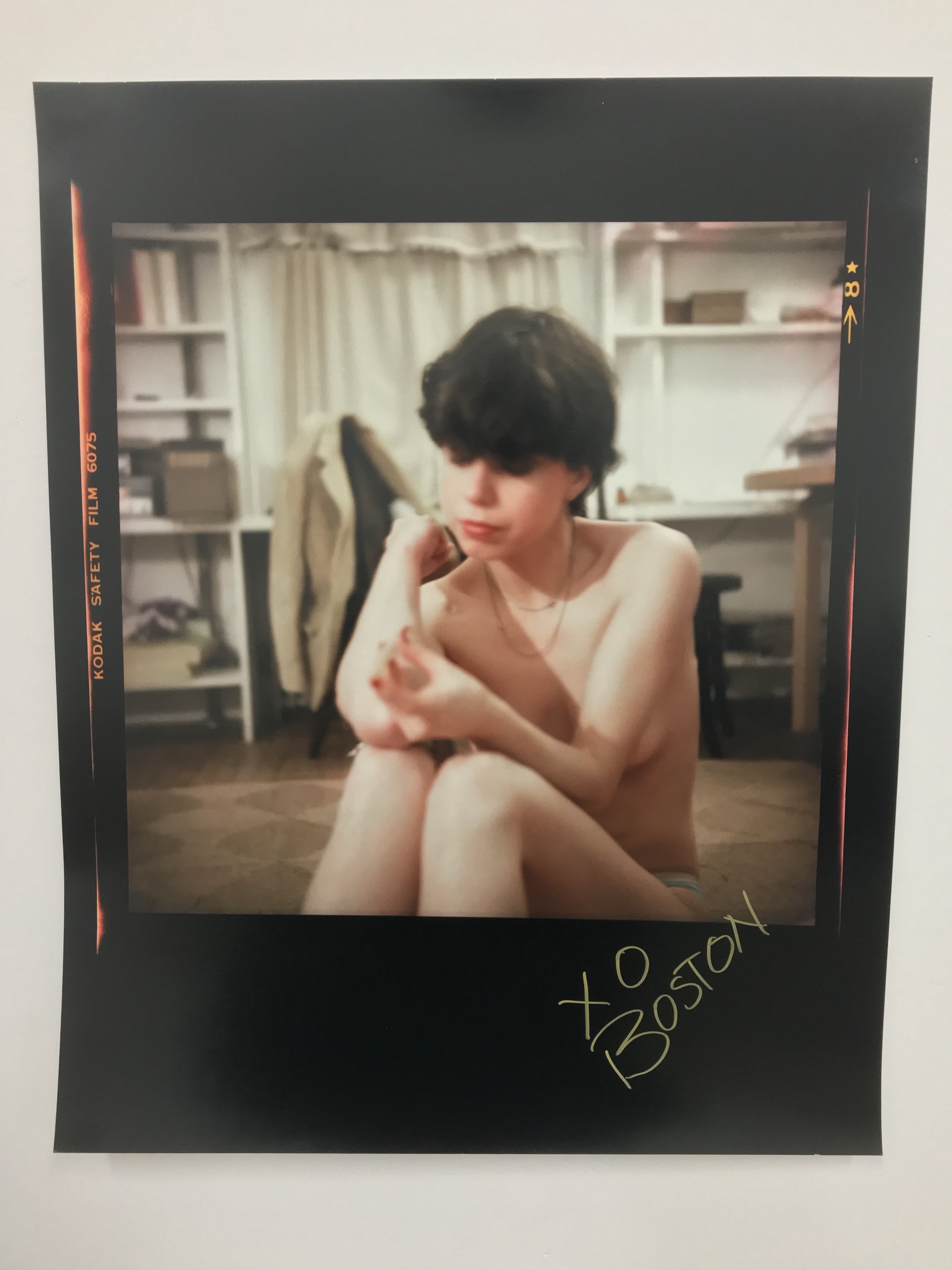Your cart is currently empty!

The road of excess leads to the palace of wisdom…
For we never know what is enough until
we know what is more than enough.
– William Blake
For rebellious artists seeking a certain hidden knowledge, downtown New York in the late 1970s and early 1980s was a seductive speedball of art and sleaze and smack set amid the rotting ruin of a dirty, broken metropolis. Photographer Gail Thacker, then an art student at The School of The Museum of Fine Arts, Boston, yearned for a transgressive danger she could not find in that preppy city. She and her best friends – notably, performance artist and photographer Mark Morrisroe and gallerist Pat Hearn – burned with a savage intensity and unbridled ambition whose excesses mirrored those of New York. As Thacker recalls: “Mark was ruthless, capable of anything, but he was my best friend. We were terrors together.” In fact, Thacker met Nan Goldin (who had let her and Morrisroe crash at her Bowery loft after her opening at Castelli Gallery) and some other members of the “Boston School of Photography” in New York once they’d migrated out of New England, sometime after graduation. “If you ask me, I think everything happened in 1980, but a lot happened in a short period of time,” muses Thacker, whose own recollections are a bit mottled by having lived through it all. Gail Thacker’s Polaroid photos are stamped with the wild beat of their moment – cheating time and sometimes death – offering the viewer a glimpse of four decades of daring art accomplices in her first solo show in Chelsea, the centre of New York City’s art scene.

Mark Morrisroe, whose performances had given grit and scandal to the Boston punk scene, quaffed heavily of the excesses of the moment, working as a prostitute and doing whatever he thought would propel his career. Morrisroe was diagnosed with AIDS in 1988 and died within in a year, in 1989. At one of his last public appearances, at Robert Mapplethorpe’s opening at the Whitney Museum, Morrisroe and Mappelthorpe faced each other as mirror images. As Thacker recalls, they had their “hair slicked back, wearing suits, holding canes, and ravaged from AIDS. There were no congratulations. They locked eyes. Time stopped and they silently passed each other by.”

Punk and affiliated movements like No Wave challenged art institutions by creating alternative spaces for youthful experimentation in nightclubs, living spaces, and small galleries outside universities and the established art scene. It was a brave, young movement that took on most media (except, perhaps painting), and Thacker’s gang of friends – Morrisroe, and gallerist Pat Hearn – were protean and polymath, hellbent on exploring many artistic avenues in search a unique direction. At the time, Pat Hearn was a performance and video artist, and she also had a gallery in her Boston loft. Thacker, then performing with The Stains (featuring Steve Stain), was studying painting and had already been working with Polaroid. It was Hearn who encouraged her to pursue photography instead of painting. Thacker and Morrisroe, as best friends, traded ideas, competing with radical production techniques – waiting long periods of time before developing, working with negatives, altering the chemical processes – to make photographs as a sort of performance, open to chance operations a la John Cage: “Influenced by minimal and abstract art, I experiment with light to create something new, unlike documentary photography that wants to duplicate what is already present.”

Thacker and performance artist Rafael Sánchez, a neighbor of Morrisroe’s, bonded while caring for their stricken friend. After Morrisroe’s tragic death at the tender age of thirty, Sánchez became Thacker’s closest friend and most prolific collaborator. Their playful interactions show a heavy influence of Dada and Surrealism, creating a sheltering reality during the most horrible years of the AIDS crisis, as many of their friends were sick and dying. Thacker, a true believer in the redemptive power of art, always proves able to instigate fierce expressiveness from her subjects. Her photographs, fully posed, are themselves performances that delve deeply into fantasy.

Between the Sun and The Moon offers a unique angle on forty years of Boston and New York underground art scenes culled from Thacker’s book of that title, recently published by the City University of New York. It includes photos of Mark Morrisroe, Rafael Sánchez, Tabboo! (Stephen Tashjian), Joey Gabriel, Kenny Kenny, Sur Rodney Sur, Shelley Marlowe, and Katrina Del Mar. With recent shows at the Museum of the City of New York and Leslie Lohman Museum of Gay and Lesbian Art, and with this show at Daniel Cooney, Gail Thacker, a key but hitherto less known member of a talented cohort, is at last emerging into the light of history.
The show is on view until 22 December 2017, which is likely the date when poet Eileen Myles, who once also moved from Boston to New York, will read from her introduction Gail Thacker Polaroids, Between the Sun and the Moon. Daniel Cooney Fine Art. 508 W 26th St, # 9C, New York, New York 10001
JEFFREY WENGROFSKY is a writer and filmmaker based in New York. More on his short films via the website Syndicate of Human Image Traffickers and the upcoming feature: Song of Hiawatha.
Leave a Reply